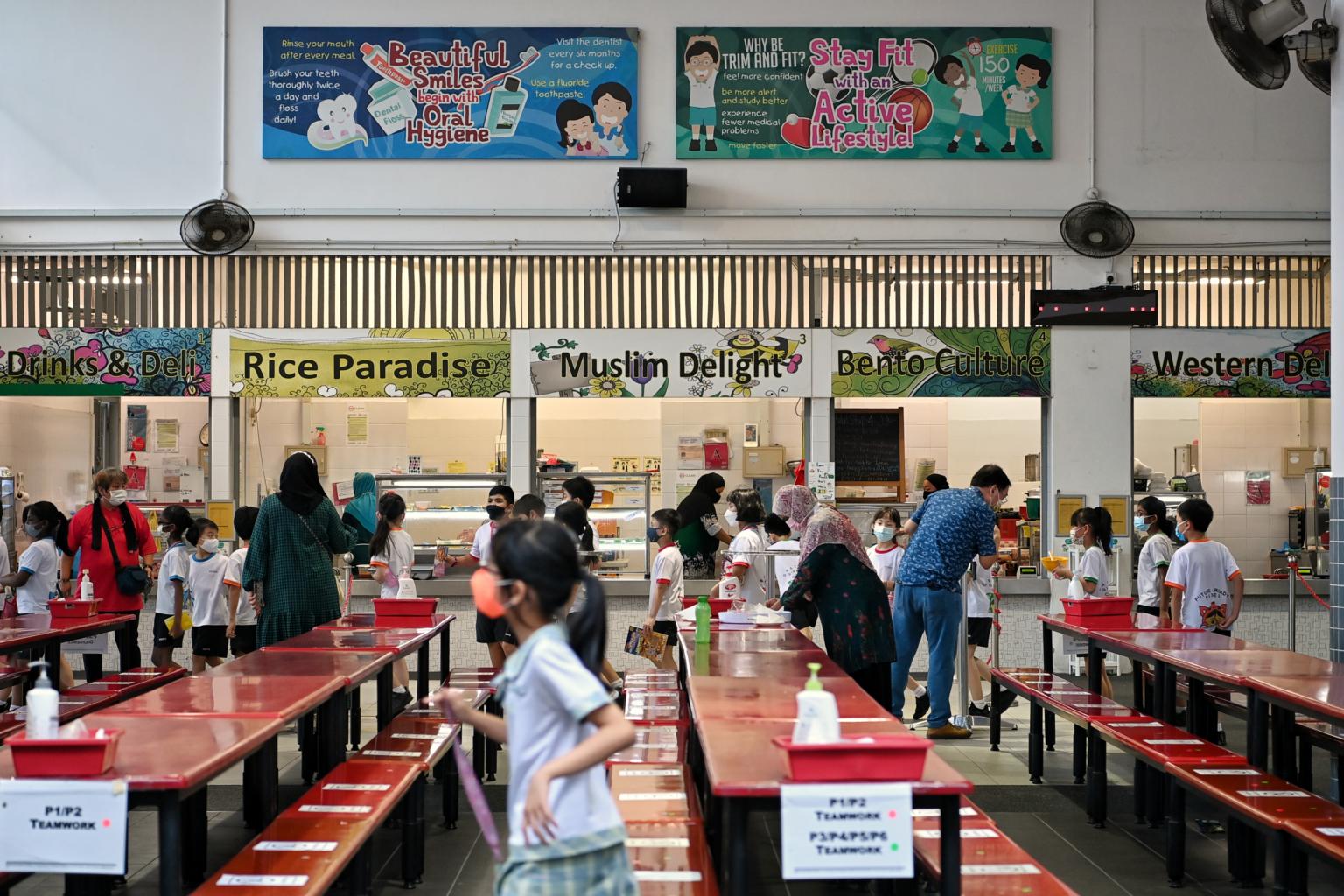Some canteen food prices rise, MOE says schools will ensure meals kept affordable
Sign up now: Get ST's newsletters delivered to your inbox

Schools are encouraged to adjust canteen food prices regularly to reflect costs while keeping options affordable, MOE said.
ST PHOTO: KUA CHEE SIONG
Follow topic:
SINGAPORE - Almost every day, Primary 4 pupil Jody Seah buys fruit slices from her school canteen, but recently these treats have been leaving the 10-year-old's wallet increasingly lighter.
Watermelon slices which used to cost 30 cents each are now 40 cents, and dragon fruit slices are now 60 cents each, double their price from last year.
Her mother, civil servant Jeslyn Seah, 39, said she has not had to increase her child's $2 daily allowance yet - but is aware that food prices are rising.
"With increased costs in oil, electricity and other things, increased canteen food prices are imminent," she said, referring to the impact from factors like the Russia-Ukraine war and supply chain disruptions.
As costs climb here and abroad, the Ministry of Education (MOE) recently revised school canteen pricing guidelines, it said on July 2.
The last review was in 2018.
These guidelines are meant to keep school canteen food affordable while providing stallholders with adequate income, it added.
Schools are encouraged to adjust their canteen food prices regularly to reflect the underlying cost while keeping the options affordable, MOE said.
"Canteen stallholders who feel that their food prices are unsustainable can approach the school with proposals, and the schools will evaluate such requests in line with the guidelines," it added.
Checks by The Straits Times found that food prices have risen slightly in some primary and secondary schools and junior colleges.
One primary school's canteen raised the prices of ban mian - a noodle dish - from $2.70 to $3, and Western fare from $3 to $3.20.
Parents are watching this development closely, saying the increases are manageable at the moment.
Mr Mohamad Syahid Arif, 41, said: "My nine-year-old son is receiving MOE financial assistance, so for now things are quite okay, but any increase will have an impact on our daily budget."
His family of four spends about $700 on food and groceries a week, and his wife, an assistant service manager at a bank, is expecting another child soon.
The couple also care for his brother, who has special needs.
He added: "We can give my son extra pocket money if he needs, but I'm still concerned about rising prices."
Core inflation in Singapore hit a 13-year high in May this year, rising to 3.6 per cent, the highest since December 2008 when it was 4.2 per cent.
Higher inflation prompted Deputy Prime Minister Lawrence Wong to say on July 4 that the Government will do more to help cushion the impact of the goods and services tax hike scheduled for January next year, if the economic situation worsens significantly.
While warehouse assistant Muhammad Amiruddin Abdullah, 39, believes the Government is doing its part for low-income Singaporeans, he noted that some may be falling through the gaps.
He said: "My kids have shared with me that some middle-income families don't qualify for assistance and the parents sometimes can't afford to give pocket money."
Mr Amiruddin, whose two children are in Secondary 1 and Primary 2, said help from MOE means, for the moment, that they have enough leftover pocket money for snacks.
MOE said schools will ensure meals are kept affordable, with generous subsidies provided for those from needy families through MOE or school-based support.
At the baseline, students in government and government-aided schools with a monthly gross household income of $2,750 or less, or a monthly per capita income of $690 or less, receive a $2 subsidy for up to seven meals a week.
"Where we need to do more to provide additional subsidies for our needy students to have healthy and regular school meals, we will certainly do so," it added.

